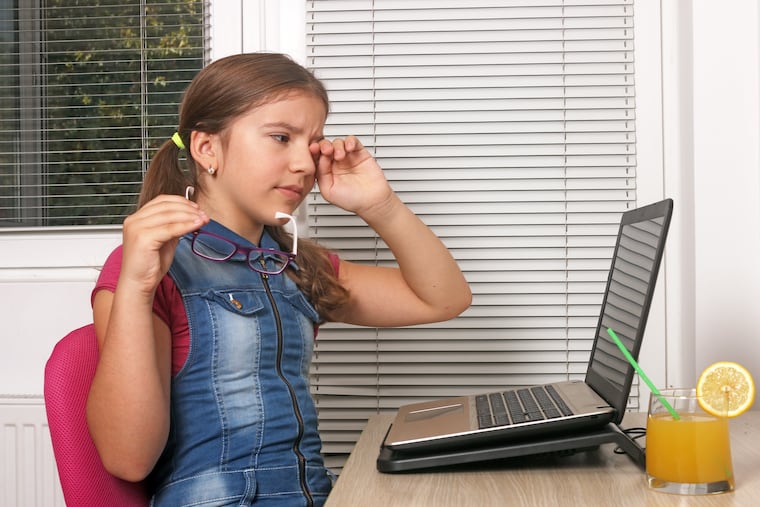How remote learning could worsen undetected vision problems in some kids
This year, most children attending public schools through remote learning will not receive an eye screen. Unfortunately, this means that parents have yet another important responsibility.

People intuitively understand the importance of good eyesight; we use it almost every moment of our awake hours to navigate our environment and to absorb information. But for school-age children in most public and private schools, good vision is one of the key fundamentals to learning — children with vision problems might not absorb information the teacher is writing on a chalkboard or, in our new COVID-19 world, displaying on a screen.
This fall, many children throughout the region and the country will not be returning to a traditional in-school setting, a fact already creating stress and difficulties for parents and households everywhere. This past spring and summer, everyone’s “screen time” significantly increased, and we are now looking at a potentially longer stretch with remote learning continuing through at least November, as is the case for the School District of Philadelphia. In this “digital learning environment,” children will be even more attached to technology. As parents and caregivers prepare for these difficult and very new challenges, they must remember that having the best vision a child can have, corrected where necessary with glasses or visual aids, is essential and an important first step for any student.
In past years, the School District addressed this need by mandating yearly vision screenings conducted by nurses in every school. Any child who did not pass a screening was advised to seek vision care from an eye doctor or other medical professional. This year, however, at least in the fall, most children attending public schools through remote learning will not receive an eye screen at school.
Unfortunately, this means that parents or caregivers have yet another important responsibility to shoulder. They must carefully observe their children as they begin remote learning to look for any possible vision issues that should be promptly evaluated.
Indications of vision problems can include headaches, blurred vision, muscle strain, eye rubbing, excessive tearing, pupils that aren’t aligned, a wandering or shaky eye, or a pupil that can appear milky or clear in a photo. Uncorrected vision issues can have an emotional impact as well, by creating feelings of anxiety or isolation and behavioral changes and depression. Everyone is dealing with a lot, but as we go through this together, it’s important to fix what we can.
» READ MORE: What all that screen time could be doing to children l Expert Opinion
Some simple, easy measures to start: If you’re a parent, make sure your children take breaks away from their screen, have good lighting, remember to blink, and put down the devices at least one hour before bedtime, so screen time doesn’t disrupt their body’s internal clock, and they can get much-needed sleep. The rule of thumb is 20-20-20: Look up from the screen every 20 minutes and focus at least 20 feet away for 20 seconds. It lets the eyes relax and reset.
If you think your child or children may be having vision issues, get in touch with your doctor, who can then refer you to an eye care specialist. At Wills Eye Hospital, we are seeing many children coming in for a checkup. Parents and caregivers can call and set up an appointment with our pediatric clinic if they suspect their child needs vision care or new glasses. Even if your child received a prescription a few years ago, vision can change over time, especially as children grow, so what worked last year might no longer be fully corrective.
We’ve seen many children through the years come in for blurry vision, which, at first might seem like a need for glasses. Then on further examination, our vision specialists identify another, sometimes more serious, condition. We know that when it comes to young eyes, there is an important window of opportunity when certain vision conditions can be more easily corrected while children are still growing and developing.
These are exceptionally difficult times in many ways. Learning in this new remote environment may become only more difficult for our children if undetected, but easy to solve, vision problems are not resolved. Please keep an eye on your children’s eyes so that they can start the new school year with the best chance of success.
Melanie Snitzer is a licensed pediatric social worker at Wills Eye Hospital. Barry N. Wasserman is a pediatric ophthalmic surgeon and associate professor of ophthalmology at Wills Eye.